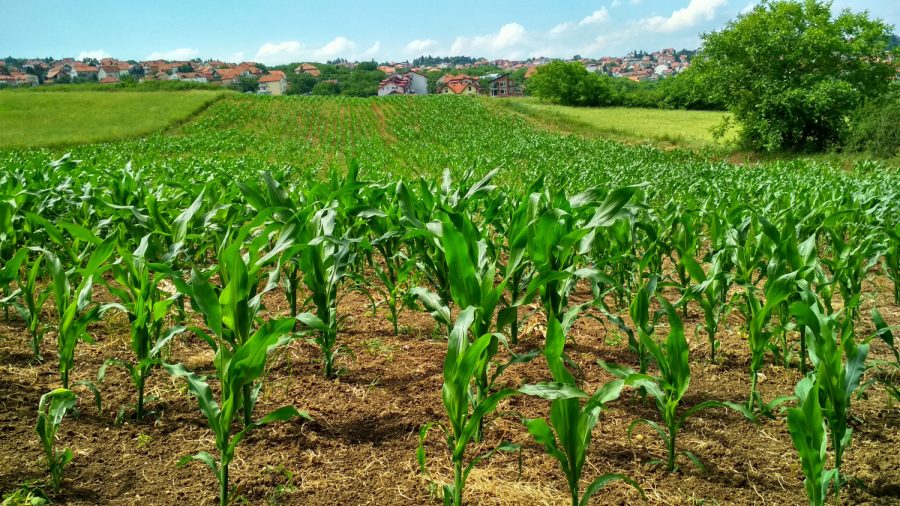A corn farmer posted two then-and-now photos on her Facebook page that illustrate the impending catastrophe for Indiana crop farmers caused by excessive rainfall this year.
In a Facebook post, Katie Staton shared two pictures of a man standing in a cornfield in Putnam County; one from last year on June 17 and one from this year’s harvest. She explains that although it’s the same man, same field, same date in the year, and the same crops, there is an obvious height difference. Last year, the corn crops were head high; this year they have hardly germinated.
The Facebook post reads:
The picture on the left? That’s Kyle a year ago in West Central IN. The picture on the right? That’s Kyle today; same field, same spot.
“These two pictures speaks volumes to the crisis American Farmers are facing this spring. Kyle is about 6’3” and the corn was nearly above his head. Most corn around our area is lucky to be out of the ground, let alone knee high. It’s just some food for thought for those who think farmers are ‘rich’ or ‘greedy’ or what have you. It’s the reason food and gas prices will be getting higher as the summer goes on. I pray for those who didn’t or still haven’t gotten their crops in—for their safety and mental health. This year will be one to remember.”
– Tori Cline
I couldn’t have said it better myself.
Excessive rain and flooding this spring caused Indiana farmers to delay their planting schedule for many crops this year, including corn and soybean. The latest U.S. Department of Agriculture statistics (pdf) show that two weeks ago, only 67 percent of the total amount of corn expected this season has actually been planted, while last week, 84 percent of Indiana’s expected corn crop was planted. In previous years, 100 percent of the corn crop is usually planted by this time.
Along similar lines, this week 42 percent of Indiana’s soybean crop was already planted two weeks ago, and a week later, 64 percent have been planted. The state’s average for the year’s soybean crop to be planted by last week is 94 percent.
Illinois Farmers Give Up on Planting After Floods, Throw Party Instead
Dozens of corn farmers, as well as those who sell them seeds, chemicals, and equipment, gathered on June 16 at ‘The Happy Spot’ restaurant in Deer Grove, Illinois, after heavy rains caused unprecedented delays in planting this year and contributed to record floods across the central United States.
The storms have left millions of acres, in what is usually a $51 billion U.S. corn market, unseeded and put crops that were planted late at a greater risk of damage from severe weather during the growing season. Together, the problems have heaped more pain on a farming sector that has suffered from years of low crop prices and a U.S.-China trade war that is slowing agricultural exports.

James McCune, a farmer from Mineral, Illinois, was unable to plant 85 percent of his intended corn acres this year and wanted to commiserate with his fellow farmers by hosting the “Prevent Plant Party” at The Happy Spot.
McCune returned his unused corn seed to a local dealer for Pioneer, a part of Corteva Inc., after planting just 900 acres of corn out of the 6,000 acres he intended to put in the ground.
Nationwide, farmers are expected to harvest the smallest corn crop in four years, according to the U.S. Department of Agriculture. The agency last week reduced its planting estimate by 3.2 percent from May and its yield estimate by 5.7 percent.
Reuters contributed to this report.

